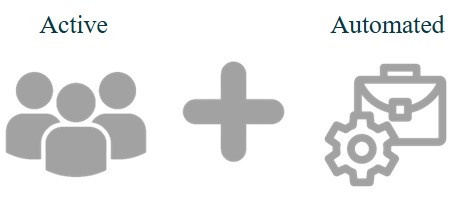Strategic discipline.
PHILOSOPHY
THE “WHY” BEHIND OUR MANAGEMENT APPROACH AND INVESTMENT STRATEGIES
Our strategies are designed to solve for a range of client objectives – all adaptable to further customization to meet a broad range of client needs.
3 INVESTMENT TENENTS:
Importance of risk management.
Pursuit of every opportunity.
Futility of benchmarking.
We prioritize safeguarding wealth over speculative gains.
Our investment philosophy is rooted in the belief that fixed income should be the ballast of a portfolio – delivering stability, lowering risk, and providing steady income. While generating alpha (or excess returns) is a consideration, we prioritize maintaining stability and quality to ensure our clients’ core objectives remain uncompromised.
Our investment philosophy is rooted in the belief that fixed income should be the ballast of a portfolio – delivering stability, lowering risk, and providing steady income. While generating alpha (or excess returns) is a consideration, we prioritize maintaining stability and quality to ensure our clients’ core objectives remain uncompromised.
We strive to capitalize on every (risk-adjusted) opportunity.
Ballast doesn’t equal boring. Even when preserving the foundational role of fixed income, municipal market complexity presents great opportunity. Using proprietary technology, we can quickly and accurately analyze market conditions, track trends, uncover inefficiencies, source bonds, and optimize allocations – ensuring that no opportunity is left unexplored.
Ballast doesn’t equal boring. Even when preserving the foundational role of fixed income, municipal market complexity presents great opportunity. Using proprietary technology, we can quickly and accurately analyze market conditions, track trends, uncover inefficiencies, source bonds, and optimize allocations – ensuring that no opportunity is left unexplored.
We view benchmarking and indexing as flip sides of the same coin.
In the municipal asset class, we believe that managing to beat a benchmark oversimplifies the complexity of the asset class and is impossible to achieve consistently. In contrast, we leverage active management, adjusting portfolios based on real-time market insights and identifying mispriced opportunities that aren't reflected in an index.
In the municipal asset class, we believe that managing to beat a benchmark oversimplifies the complexity of the asset class and is impossible to achieve consistently. In contrast, we leverage active management, adjusting portfolios based on real-time market insights and identifying mispriced opportunities that aren't reflected in an index.
APPROACH
ACTIVELY MANAGING TO CLIENT GOALS
Rather than forcing our investment decisions to prioritize alpha and managing portfolios to an arbitrary index, we make our clients’ goals, our goals.
PROBLEMS WITH BENCHMARK-DRIVEN MANAGEMENT:
PROBLEMS WITH BENCHMARK-DRIVEN MANAGEMENT:

misaligned priorities
Benchmarks are designed to reflect market averages – ignoring individual goals

short-term thinking
Benchmark-driven performance assessments encourage focus on demonstrating alpha over shorter-term periods – not longer-term strategy

higher
risk
risk
A focus on alpha may push managers to take on unnecessary credit, interest rate, or liquidity risks to outperform – compromising stability

poor
tailoring
tailoring
Beating a benchmark often means making broad market calls that lack nuance, while client objectives like capital preservation or cash flow require a more tailored approach

arbitrary weighting
Benchmarks more heavily weight large or indebted issuers – not necessarily the best investment opportunities or the client's priorities

ignored
tax impacts
tax impacts
Benchmark-driven strategies rarely account for after-tax returns – at times failing to leverage state-specific tax benefits
PROCESS
STRATEGICALLY BALANCING AUTOMATION WITH ACTIVE MANAGEMENT




Model Inputs:
- Outlook (macro + regional)
- Economic data analysis
- Technical analysis
- Identify rate drivers
- Predict rate directionality
- Relative value identification
- Risk/reward assessment

Portfolio Management:
- Update models with inputs
- Compare models vs. portfolios
- Generate portfolio needs
- Aggregate portfolio needs
- Pre-allocate CUSIP universe
- Determine bond availability
- Allocate bonds
FULLY AUTOMATED
TECH-ENABLED
FULLY ACTIVE
Our income-focused and cash management strategies are especially well suited to complete automation due to their rules-based structure, repetitive reinvestment cycles, and narrow focus on a universe of high-quality investments. Automation streamlines processes, enabling scalability and cost-efficiency while consistently meeting client expectations.
For outperformance-focused and select cash flow-focused strategies, we leverage a hybrid approach of a semi-automation with an active component. Pairing a structural model portfolio with portfolio manager inputs enables “Active Management at Scale”, which we believe is a more effective and consistent method of outperforming.
For value-focused and custom strategies – which require human judgment, flexibility, and a nuanced understanding of the market and client needs – we rely heavily on the expertise of our entire investment team to assess market conditions and actively manage risks and seize opportunities—roles that automation cannot replace.
